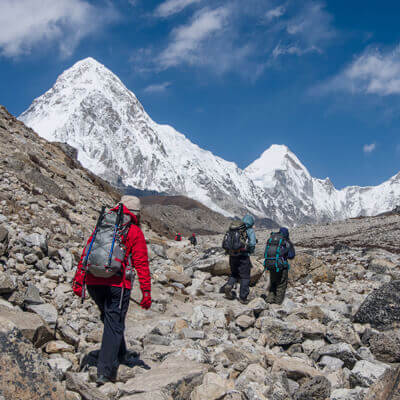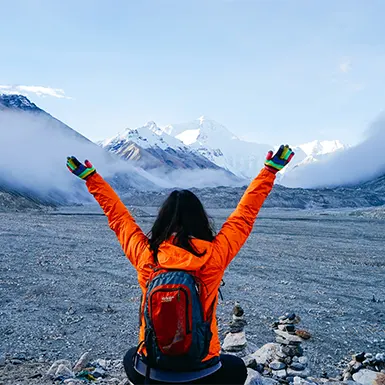Preparation Tips for Each Season
Trekking to Everest Base Camp is a challenging adventure that requires careful preparation. The gear you’ll need and the health considerations you should consider can vary depending on the season. Moreover, the best time for Everest Base Camp Trek can significantly influence your experience and preparation needs. Here are some specific preparation tips for each season, keeping in mind the best times to embark on this adventure:
Spring (March-May)
Gear Recommendations: Pack layers to accommodate fluctuating temperatures. Include a good quality down jacket for colder mornings and evenings and lighter clothing for warmer daytime trekking. Don’t forget a sturdy pair of trekking boots, sunglasses, sunscreen, and a hat to protect against the sun.
Health Considerations: Stay hydrated and protect yourself from the sun to prevent heatstroke. Be aware of the symptoms of altitude sickness, which can occur in any season.
Monsoon (June – August)
Gear Recommendations: Waterproof clothing is essential, including a rain jacket, waterproof trousers, and waterproof covers for your backpack. Quick-drying clothes and extra pairs of socks will also come in handy. A sturdy pair of waterproof trekking boots is a must.
Health Considerations: Be extra cautious of slippery trails to avoid injuries. Also, ensure you have a good supply of insect repellent to protect against mosquitoes and other more prevalent insects during this season.
Autumn (September – November)
Gear Recommendations: Pack layers to accommodate varying temperatures similar to spring. A good quality down jacket, trekking boots, sunglasses, sunscreen, and a hat are essential. Thermal underwear can also be beneficial as temperatures drop significantly at night.
Health Considerations: As with spring, stay hydrated, protect yourself from the sun, and be aware of the symptoms of altitude sickness.
Winter (December – February)
Gear Recommendations: Warm clothing is crucial. Pack a high-quality down jacket, thermal underwear, a warm hat, gloves, and insulated boots. Gaiters can help keep snow out of your boots, and crampons may be necessary if trails are icy.
Health Considerations: Know the risk of frostbite and hypothermia and the symptoms. Keep yourself warm and dry as possible, and ensure you have a good supply of hot drinks to keep your body temperature up.
Remember, no matter what season you choose for your trek, a good level of physical fitness is essential. You should also have a comprehensive travel insurance policy that covers high-altitude trekking.

Conclusion
We highly recommend you trek in the autumn or spring. This is the best time for Everest Base Camp Trek. The trekking trails are pretty busy, but government-authorized trekking companies manage everything in advance and make your trek hassle-free. You must book in advance because they must manage your flight ticket for Lukla, Hotels in Kathmandu, lodges in the trekking area, and trekking crewmembers.
If you haven’t time to trek in these two seasons, you must do something extra. If you trek in the winter, pack warm clothes, find trekking partners, and be ready to fight against the cold. And if you want to trek in the monsoon or summer, you need to flex your schedule and add extra trekking stuff to your backpack.
Our suggestion is to prioritize safety before trekking. I wish you a happy and memorable trek, dear trekkers!

